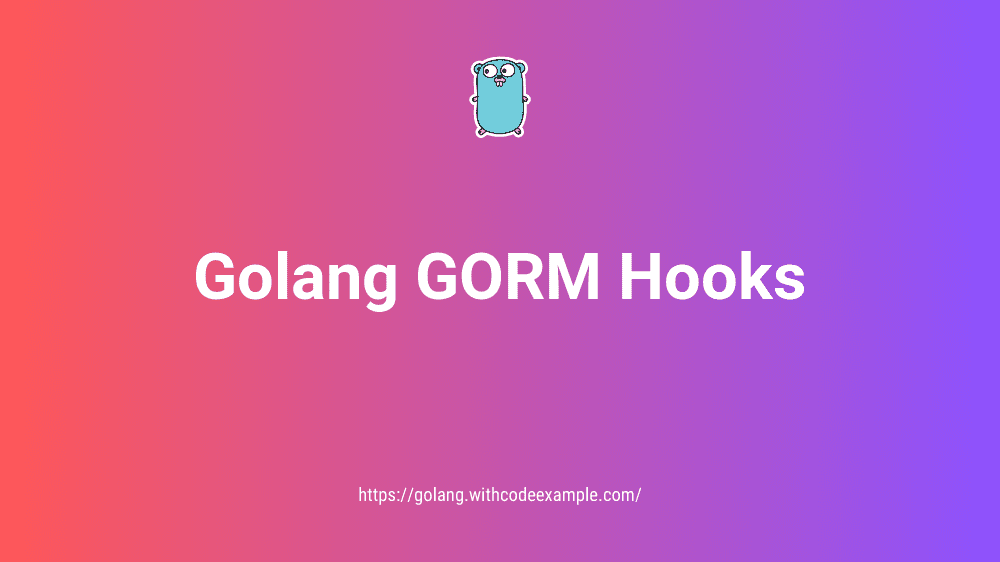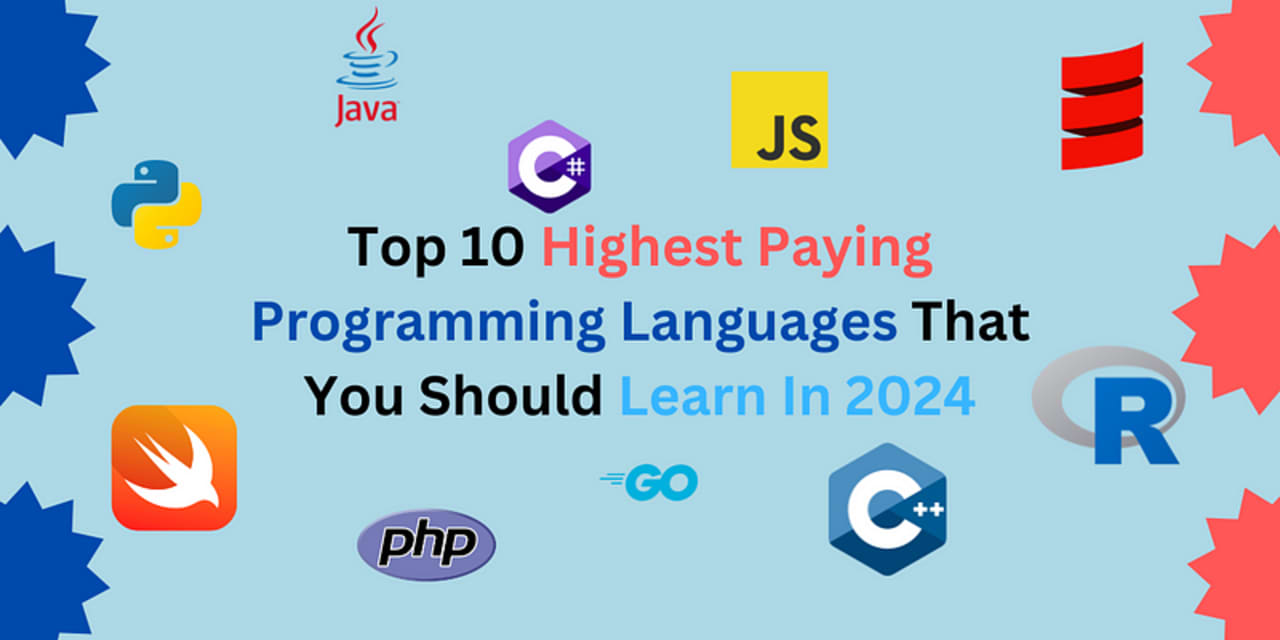Golang GORM Hooks
- With Code Example
- December 14, 2023
Elevate Your Database Management in GoLang Applications with Advanced GORM Hooks
In the dynamic world of GoLang development, efficient data management is crucial for building robust and scalable applications. GORM, a popular Object Relational Mapper (ORM) for Go, provides a powerful set of hooks that allow developers to intervene at various stages of the database lifecycle. In this comprehensive guide, we will explore the intricacies of GORM hooks, focusing on the BeforeSave and AfterSave, BeforeCreate and AfterCreate, BeforeUpdate and AfterUpdate, and BeforeDelete and AfterDelete hooks. By the end of this journey, you’ll be adept at leveraging these hooks to enhance your data handling capabilities in Golang applications.

Understanding GORM Hooks
Before diving into each specific hook, let’s establish a foundational understanding of GORM hooks in general.
What are GORM Hooks?
GORM hooks are functions that can be registered to run at different points in the database interaction process. These hooks provide developers with the ability to execute custom logic before or after certain operations, offering fine-grained control over the data flow.
// Example of registering a GORM hook db.Callback().Create().Before("gorm:before_create").Register("custom_hook", MyBeforeCreateFunction)In this example,
MyBeforeCreateFunctionis a custom function that will be executed before a create operation.
BeforeSave and AfterSave Hooks
The BeforeSave and AfterSave hooks provide developers with opportunities to intervene just before an object is saved to the database and immediately after.
BeforeSave Hook:
The
BeforeSavehook is triggered just before GORM saves an object to the database. This is particularly useful for tasks such as timestamp updates or data validation before persistence.// Example of BeforeSave hook func (user *User) BeforeSave(tx *gorm.DB) (err error) { user.LastUpdated = time.Now() return nil }Here,
BeforeSaveis updating theLastUpdatedfield before saving theUserobject.AfterSave Hook:
Conversely, the
AfterSavehook is executed immediately after the object is successfully saved to the database. This can be beneficial for actions like triggering notifications or logging.// Example of AfterSave hook func (user *User) AfterSave(tx *gorm.DB) (err error) { log.Println("User successfully saved:", user.ID) return nil }In this example, the
AfterSavehook logs a message indicating the successful save of theUserobject.
BeforeCreate and AfterCreate Hooks
The BeforeCreate and AfterCreate hooks specifically focus on actions related to the creation of new records.
BeforeCreate Hook:
The
BeforeCreatehook is invoked just before a new record is created in the database. It’s commonly used for setting default values or performing additional setup for new records.// Example of BeforeCreate hook func (user *User) BeforeCreate(tx *gorm.DB) (err error) { user.CreatedAt = time.Now() return nil }Here,
BeforeCreatesets theCreatedAtfield to the current time before creating a newUserrecord.AfterCreate Hook:
The
AfterCreatehook, as the name suggests, runs immediately after a new record is successfully created. This can be handy for tasks like sending welcome emails or triggering related processes.// Example of AfterCreate hook func (user *User) AfterCreate(tx *gorm.DB) (err error) { emailService.SendWelcomeEmail(user.Email) return nil }In this example, the
AfterCreatehook triggers the sending of a welcome email to the newly created user.
BeforeUpdate and AfterUpdate Hooks
The BeforeUpdate and AfterUpdate hooks focus on actions related to updating existing records.
BeforeUpdate Hook:
The
BeforeUpdatehook is invoked just before an existing record is updated in the database. This is beneficial for tasks such as updating modification timestamps or validating changes.// Example of BeforeUpdate hook func (user *User) BeforeUpdate(tx *gorm.DB) (err error) { user.LastModified = time.Now() return nil }Here,
BeforeUpdateupdates theLastModifiedfield before updating an existingUserrecord.AfterUpdate Hook:
The
AfterUpdatehook executes immediately after an existing record is successfully updated. This can be utilized for tasks like logging changes or triggering notifications.// Example of AfterUpdate hook func (user *User) AfterUpdate(tx *gorm.DB) (err error) { log.Println("User successfully updated:", user.ID) return nil }In this example, the
AfterUpdatehook logs a message indicating the successful update of theUserrecord.
BeforeDelete and AfterDelete Hooks
Finally, the BeforeDelete and AfterDelete hooks provide control over actions related to record deletion.
BeforeDelete Hook:
The
BeforeDeletehook is invoked just before a record is deleted from the database. This can be useful for tasks such as soft delete implementations or cascading deletions.// Example of BeforeDelete hook func (user *User) BeforeDelete(tx *gorm.DB) (err error) { user.DeletedAt = time.Now() return nil }Here,
BeforeDeletesets theDeletedAtfield to the current time before deleting aUserrecord.AfterDelete Hook:
The
AfterDeletehook is executed immediately after a record is successfully deleted. This can be utilized for tasks like logging deletions or triggering cleanup processes.// Example of AfterDelete hook func (user *User) AfterDelete(tx *gorm.DB) (err error) { log.Println("User successfully deleted:", user.ID) return nil }In this example, the
AfterDeletehook logs a message indicating the successful deletion of theUserrecord.
Conclusion
In this comprehensive exploration of Golang GORM hooks, we’ve delved into the intricacies of BeforeSave and AfterSave, BeforeCreate and AfterCreate, BeforeUpdate and AfterUpdate, and BeforeDelete and AfterDelete hooks. These hooks provide a powerful mechanism for developers to customize and enhance database interactions in their GoLang applications.
As you integrate GORM hooks into your projects, consider the specific requirements and workflows of your application. Leveraging these hooks strategically can lead to more maintainable, efficient, and feature-rich data handling.
Mastering GORM hooks allows you to orchestrate your database interactions with precision, making your GoLang applications more adaptable and responsive to your unique business logic and requirements. May your GORM hooks be both robust and elegant as you navigate the ever-evolving landscape of GoLang development.






